The Huawei P30 & P30 Pro Reviews: Photography Enhanced
by Andrei Frumusanu on April 18, 2019 9:00 AM EST- Posted in
- Mobile
- Smartphones
- Huawei
- P30
- P30 Pro
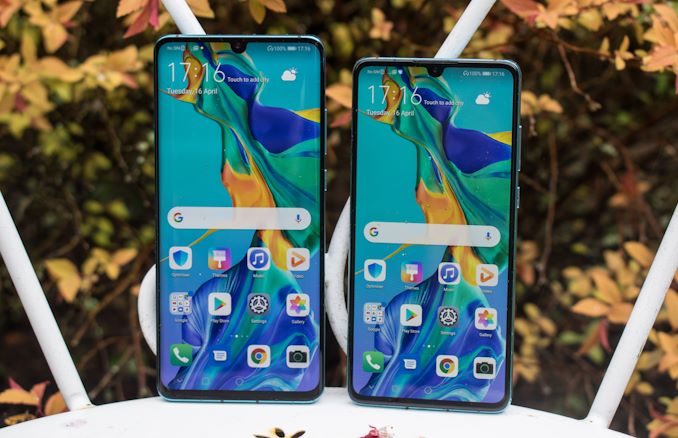
The last year has been extremely exciting period for Huawei and its products: Starting with the P20, the company’s flagships have been truly transformative in terms of their camera photography capabilities. The P20 and P20 Pro last year were extremely intriguing products for the industry, as they ushered in the first step towards an ever more prevalent aspect of modern cameras: computational photography.
Huawei had pioneered the technique to bring new innovative use-cases such as the introduction of multi-frame combination mechanism for low-light capture (a.k.a. Night Mode), which really raised the bar and lead the way in terms of what we expect smartphone cameras be capable of in low light. Huawei didn’t only innovate in terms of software, but also using quite exotic hardware camera sensors, such as the 40MP units in the P20 Pro and the Mate 20 Pro.
This year, Huawei doubled down on the photography aspects of its predecessors with the introduction of the new P30 and P30 Pro. The two new flagships pick up where the P20s left off, and provide yet again a new set of generational improvements to the camera setups. This year, along with software optimisations, we yet again see big changes in the hardware of the cameras, with the introduction of an industry first RYYB 40MP main camera sensor, as well as the addition of an even more exotic 5x telephoto camera module that is enabled via a prism mirror and a 90° sensor layout.
Naturally, the P30 and P30 Pro also bring overall improvements and redesigns in the other aspects of what makes them flagship smartphones, with larger batteries, new screens, and overall design revamps. Let’s dive into the specs:
| Huawei P30 Series | ||||
| P30 | P30 Pro | |||
| SoC | HiSilicon Kirin 980 2x Cortex-A76 @ 2.60 GHz 2x Cortex-A76 @ 1.92 GHz 4x Cortex-A55 @ 1.80 GHz |
|||
| GPU | Mali G76MP10 @ 720MHz | |||
| DRAM | 6/8GB LPDDR4X | 8GB LPDDR4X | ||
| Display | 6.1" OLED 2340 x 1080 |
6.47" OLED 2340 x 1080 |
||
| Size | Height | 149.1 mm | 158.0 mm | |
| Width | 71.36 mm | 73.4 mm | ||
| Depth | 7.57 mm | 8.41 mm | ||
| Weight | 165 grams | 192 grams | ||
| Battery Capacity | 3550mAh Rated 3650mAh Typical |
4100mAh Rated 4200mAh Typical |
||
| Wireless Charging | - | Qi | ||
| Rear Cameras | ||||
| Main | 40MP f/1.8 RYYB sensor 27mm equiv. FL |
40MP f/1.6 OIS RYYB sensor 27mm equivl. FL |
||
| Telephoto | 8MP f/2.4 3x Optical zoom 80mm equiv. FL |
8MP f/3.4 5x Optical Zoom 135mm equivl. FL |
||
| Wide | 16MP f/2.2 Ulta wide angle 17mm equivl. FL |
20MP f/2.2 Ultra wide angle 16mm equivl. FL |
||
| Extra | - | Time-of-flight sensor | ||
| Front Camera | 32MP f/2.0 | |||
| Storage | 128 / 256 (P30 Pro only) + proprietary "nanoSD" card |
|||
| I/O | USB-C 3.5mm headphone jack |
USB-C | ||
| Wireless (local) | 802.11ac Wave 2 Wi-Fi Bluetooth 5.0 LE + NFC |
|||
| Cellular | Kirin 980 Integrated LTE (Category 21/18) DL = 1400 Mbps 4x4 MIMO 3x20MHz CA, 256-QAM (5CA no MIMO) UL = 200 Mbps 2x2 MIMO 1x20MHz CA, 256-QAM |
|||
| Splash, Water, Dust Resistance | IP53 (no water resistance) |
IP68 (water resistant up to 1m) |
||
| Dual-SIM | 2x nano-SIM | |||
| Launch Price | 6+128 GB: 749€ | 8+128 GB: 999€ 8+256 GB: 1099€ |
||
Both the P30 and P30 Pro are powered by HiSilicon’s Kirin 980 chipset. By now the 7nm SoC should be familiar with most of our readers, as we had an in-depth review of the silicon in the review of the Mate 20 and Mate 20 Pro. The combination of Arm’s Cortex A76 CPU cores in the new 7nm manufacturing node made for some impressive generational gains, with the new chipset’s CPUs still tracking ahead of the new generation competition such as the Snapdragon 855 or the Exynos 9820. GPU performance, while not as leading as the competition, is still adequately competitive.
Versus the Mate 20’s, the P30’s increase the amount of DRAM available. The P30 sees 6GB of RAM while the P30 Pro comes with 8GB of LPDDR4X. Both models come with 128GB of base capacity NAND storage.
Like the P20s before, the P30s this year differ in terms of their form-factor. The P30 Pro is the larger sibling in a 73.4mm wide form-factor, while the P30 is smaller with 71.36mm width. The screen sizes are respectively 6.47” and 6.1”, however with the screen aspect ratios in the last few years becoming more elongated as well as bezels shrinking, it’s no longer a very representative way to describe phone form-factors.
The P30 Pro comes with a 4200mAh battery while the smaller P30 sports a 3650mAh unit. It’s again to be noted that the actual design capacities here are 100mAh less, a quite annoying development in recent years in how manufacturers advertise their battery capacities.
At the centre of the P-series (which apparently stands for Photography) is of course the camera, or better said, the cameras. While on the P20s we saw different camera sensors between the smaller and bigger Pro models, the P30s both come with the same new 40MP sensor. The new module manufactured by Sony is the first of its kind in a commercial smartphone by employing a new RYYB colour filter structure, as opposed to the classical RGGB Bayer filter. Replacing the green subpixel with a yellow one promises to increase light sensitivity by 30%. In the past we’ve seen attempts with RGBW sensors, however they’ve all ended up in failure and never saw wide adoption. Huawei here promises a better implementation as it’s able to fully take advantage of the RYYB filter structure from sensor to SoC ISP without having to reconvert the data-stream to a regular Bayer stream, something which currently would be unique in the space.
The 40MP main sensor on the P30 comes in an f/1.8 aperture lens module, while the P30 Pro uses a wider f/1.6 lens. Furthermore the P30 Pro also employs OIS on the main sensor, something that’s been notoriously lacking in Huawei smartphones in the last couple of years.
Both P30s have wide-angle modules, and much like on the Mate 20’s these two differ in terms of their sensors. The P30 uses a 16MP f/2.2 unit with a 17mm equivalent focal length, while the P30 Pro has a 20MP f/2.2 unit with a slightly wider 16mm equivalent focal length. Huawei introduced the wide-angle sensors on the Mate 20 and Mate 20 Pro and they’ve been fantastic additions to the camera setups.
Finally, Huawei raised the bar in terms of zoom/telephoto module capability. The new P30 contains a similar 8MP f/2.4 3x / 80mm equivalent module as on the P20 Pro and the Mate 20 Pro, so there’s not apparent chance here in terms of the paper specifications.
The P30 Pro on the other hand has a special new telephoto/zoom module, reaching an optical magnification factor of 5x, or a 135mm equivalent focal length. Usually such higher magnification factors weren’t available in smartphones due to limitations on the camera module thickness; you either had to have a very large bump, or you had to employ a tiny sensor. Huawei here does neither, and instead is positioning the camera sensor at a 90° perpendicular position. This was achieved through a prism mirror. The drawback of this system is that the aperture is quite limited at only f/3.4, which should result in less light.
Finally, the P30 Pro comes with a ToF sensor, however much like on the Honor View20 we reviewed in January, it’s of extremely limited use.
The P30s, much like the P20s, are distinguished by their vertical camera setups on the upper side of the phones. Again, both phones maintain the form-factor of their predecessors, however the P30 Pro does get notably longer than the P20 Pro.
P30 Design
The P30s, much like the P20s, are distinguished by their vertical camera setups on the upper side of the phones. Again, both phones maintain the form-factor of their predecessors, however the P30 Pro does get notably longer than the P20 Pro.
For both the P30 and P30 Pro, the front is now distinguished by a dew-drop notch design in an otherwise near bezel-less smartphone. Huawei was able to minimise the front plastic rim between display and metal frame, and was able to completely get rid of it on the back glass panel, which now is slightly curved and flowing to the sides.
On the bottom of the phone we find the main speaker grill as well as a 3.5mm headphone jack.
The top merely has a microphone hole and is otherwise bare. What is odd of the new P30 design is the flat top and bottom frames – I don’t think I remember of any smartphone ever employing such a design. It’s not really hindering in any way, but it is quite odd in terms of feel and contrary to what one is used to in a smartphone.
The right side sees both the power button as well as the volume rocker button. Placement is identical to the P20 and it’s a good design for a phone of this size. The left side sees the nanoSIM+Nanomemory slot.
P30 Pro Design
The P30 Pro’s design differs a lot more from its predecessor. Here the new P30 Pro is a lot more akin to the Mate 20 Pro than the P20 Pro, sharing the same curved screen and back glass design. The screen design, besides the curved edges, is identical in design with the P30, sharing the same dew-drop notch design for the camera.
What is different though and not immediately visible is that the P30 Pro doesn’t actually have an ear-piece speaker. Huawei instead opted for a piezoelectric actuator speaker integrated into the screen. I’m not too convinced of this implementation as first of all it doesn’t serve as a stereo speaker (Unlike the G8’s integrated display speaker), and second of all I fail to see the value as it also produces lesser quality call audio.
Because the phone is curved both on the front and back, there’s no space for a tray on the sides of the phone. Like on the Mate 20 Pro, the SIM tray is found on the bottom side. Also, unfortunately like on the Mate 20 Pro, Huawei opted to leave out the 3.5mm headphone jack on the more expensive model. Again I frankly find this stupid that the company would opt to leave out a feature on the higher-end model.
The top of the phone is similar to the P30, however we see the addition of an IR transceiver.
The edges of the P30 Pro flow seamlessly on the sides, giving an almost identical feel to the Mate 20 Pro. I actually love this design as it’s simply vastly more ergonomic, and it makes the larger phone feel much smaller than it really is. Build quality, like on the Mate 20 Pro, is also excellent.
If I had one gripe about the design of the P30s, it’s their weight. Particularly the 192g of the Mate 20 Pro is very heavy and on the top-end of the scale, without even being the biggest phone around. The P30 Pro offers an IP68 rating, while the P30 offers a regular IP53 rating.



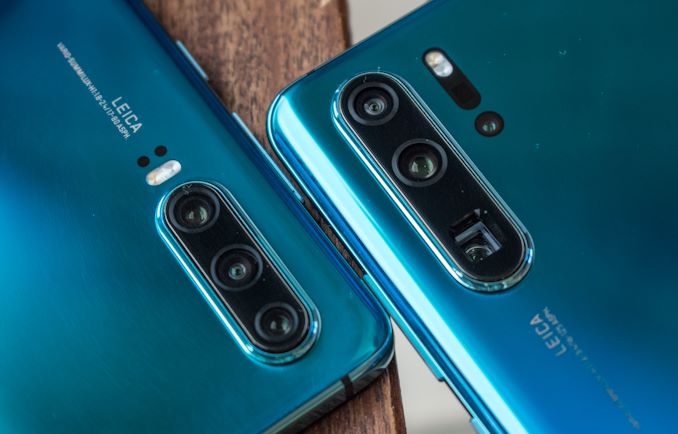

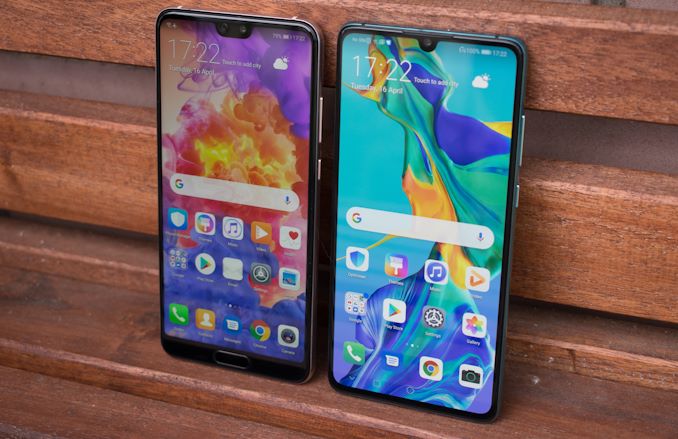
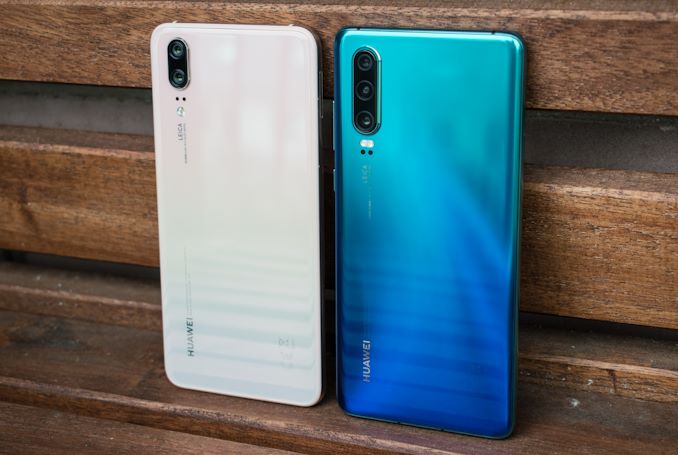

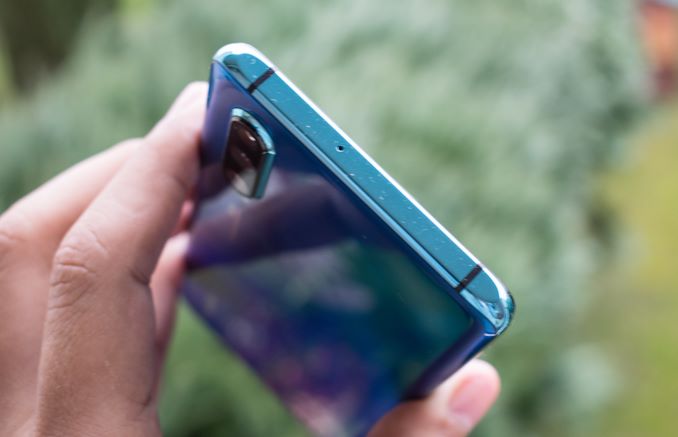
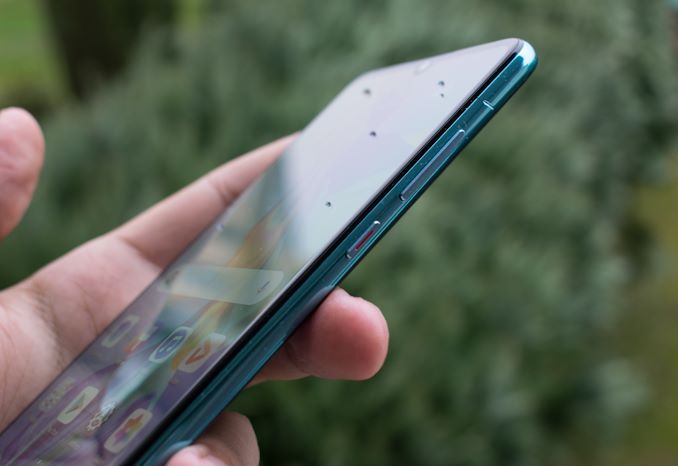
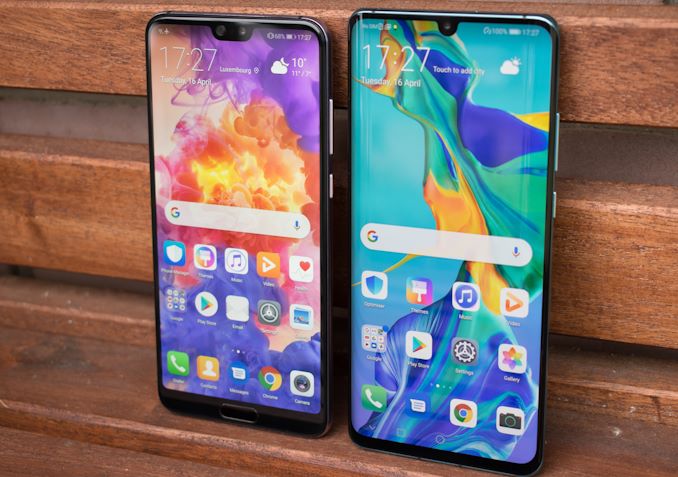
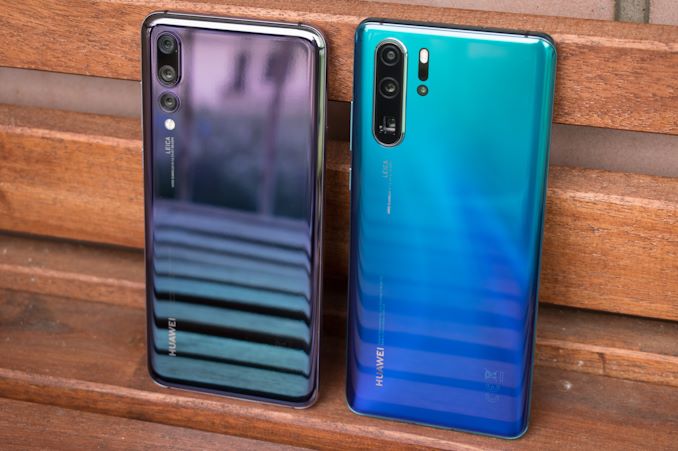

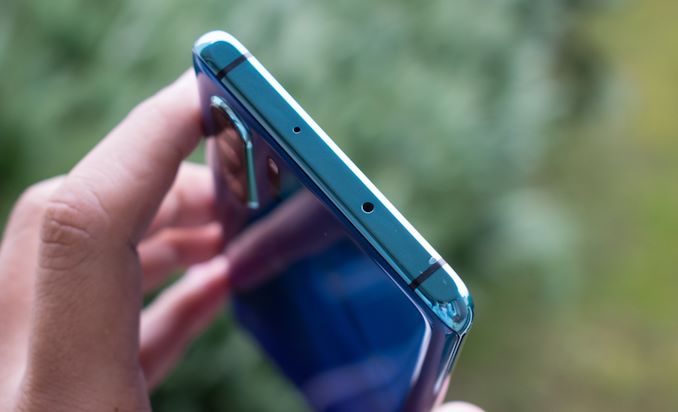
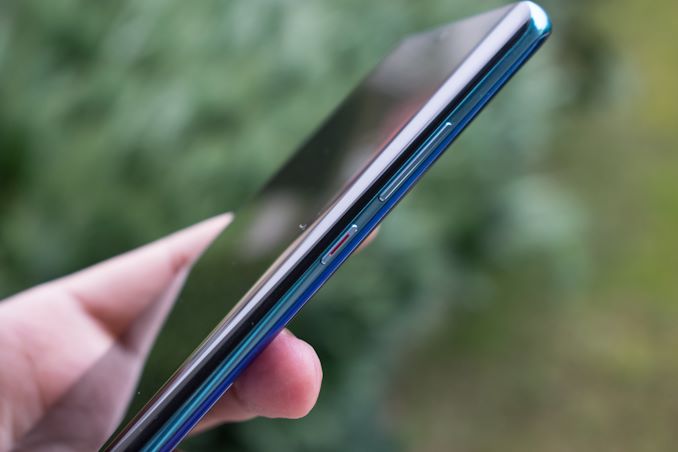








85 Comments
View All Comments
Andrei Frumusanu - Thursday, April 18, 2019 - link
The sensor should be in 4:1 binning mode, otherwise the dynamic range would be much worse.No 10-bit HDR or HDR recording.
4K30: 40Mbps AVC High@5.1 // 25Mbps HEVC High@L5
FHD60: 25Mbps AVC High@4.2 // 16Mbps HEVC Main@4.1
The bit-rates are quite low.
eastcoast_pete - Thursday, April 18, 2019 - link
Thanks Andrei! The low bit rates are unfortunate, and likely hurt the quality of the video. If you still have the P30 Pro, could you try the Android app "Open Camera" and see if that allows for higher bit rate recording?In general, I don't get why so many phone manufacturers are hamstringing even their flagships like that. At least give users the option of recording at higher bit rate. These days, even many affordable mainstream microSD cards support write speeds of 60 Mb/s and up.
Andrei Frumusanu - Friday, April 19, 2019 - link
In Open Camera:AVC tops out at 25Mbps at 4K30 for some reason.
HEVC can be set to 80Mbps in the settings and results in a 62Mbps file at 4K30.
eastcoast_pete - Friday, April 19, 2019 - link
Thanks Andrei! Appreciate it! Any comments on how the 80 Mbps video looked like?I suggested to try this to a. learn what the phone hardware can support and b. hopefully motivate/shame Huawei (and others) with your results to improve their camera software. If Open Camera can go up to 80 Mbps in 4K HEVC recording, the phone is clearly capable of higher bitrates than Huawei uses. As someone interested in digital video, I always want to acquire at the highest bit rate possible, and then compress afterwards (thank you, Handbrake team!). Throwing out data is easy, re-creating details is hard or impossible. Also, higher bit rates generally reduce compression artifacts.
s.yu - Friday, April 19, 2019 - link
Hey Andrei, I've been looking at the 40MP shots of the P20P, 30P, and Mate20P, and a very peculiar thing I noticed is that both the P20P and 30P have false color interpolation artifacts, while the Mate20P avoids that; but in terms of chroma noise, Mate20P and P30P are on the same level, while in terms of texture aggregation, the P20P and Mate20P behave similarly.So the suppression of the interpolation artifacts doesn't seem to be due to chroma NR, nor is it in any way correlated to sharpening, *nor is it CFA-bound*, as the P20P shares a CFA with Mate20P while P30P uses RYYB. So do you have any idea why this might be?
I've been examining the area below the left half of the bridge for chroma noise and the pale-looking tree there exhibits a lot of interpolation artifacts in the P20P/30P shots:
https://images.anandtech.com/galleries/7027/P30Pro...
https://images.anandtech.com/galleries/7027/Mate20...
https://images.anandtech.com/galleries/7027/P20Pro...
Andrei Frumusanu - Friday, April 19, 2019 - link
I think all of it is just results of the lens; if you check the centre of other images they all look fine, but it gets worse and worse off-centre for the P20P and P30P.s.yu - Friday, April 19, 2019 - link
Hmmm, I couldn't think of an optical artifact with that kind of behavior...I don't think CA would be especially evident on foliage especially when the lighting of the scene renders it very low contrast. Basically in that really typical scene you're seeing blobs of other colors (which are not actually present) in a cloud of yellowish green.I chose another set and this time there's orange artifacts in the green bush in the center of the scene possibly with magenta artifacts in white or very faintly pink flowers slightly above it(the generally uniform color of the petals seem artificially "split" by the P30P between magenta and white, but I'm not really sure), again neither are visible on bayer or Mate20P.
https://images.anandtech.com/galleries/7025/P30Pro...
https://images.anandtech.com/galleries/7025/Mate20...
https://images.anandtech.com/galleries/7025/Pixel3...
It isn't so obvious in the P20P shot, but the severe texture aggregation rendered it impossible to tell. Usually for these artifacts to show, the pattern's frequency has to be high enough.
Andrei Frumusanu - Friday, April 19, 2019 - link
It's hard to separate sensor effects from post-processing effects. Another thing to take into account is that the P30P sends RYYB data directly to the ISP where things get recomputed. It can be either a DTI issues on the sensor, an ISP recombination issue, or simply a senseless noise reduction filter.neothe0ne - Thursday, April 18, 2019 - link
It looks like the speaker evaluation is missing from the review?Andrei Frumusanu - Thursday, April 18, 2019 - link
I'll be re-adding that soon / tomorrow, I wanted to add a part regarding stereo separation.In general the speaker is good, however it's still a mono bottom firing speaker.